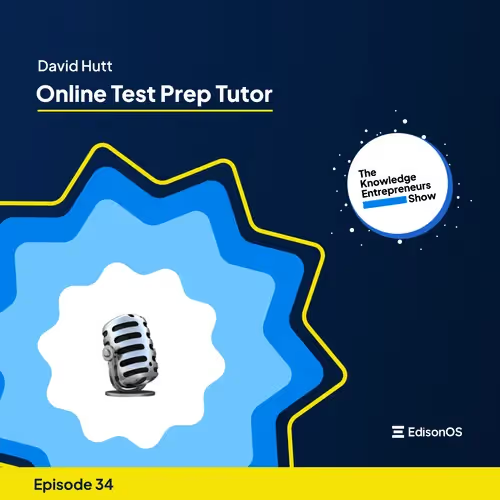




Key Takeaways
- Starting SAT prep early offers an advantage, with ideal starting points from sophomore spring to junior fall for a steady, low-stress study pace.
- Prep time depends on factors like current skill level, target score, study schedule, and resource quality, helping personalize a realistic timeline.
- A structured study plan, full-length practice tests, and test-day simulations build confidence and stamina for achieving top SAT scores.
Are you preparing for the Digital SAT? Exciting times ahead! Of course, nothing great is created without anticipation, and we assure you that a good plan is a real friend. The SAT comprises basic skills such as reading, writing, and maths, but now a new format introduces another level of challenges. Whether the candidate wants to achieve the highest possible score on the SAT or even the best score that they can give, understanding when to start preparing for the SAT is vital.
Spoiler: As they always say, the sooner one starts, the better, and there is always time to start.
Here is your detailed guide to understand when you should start preparing, what strategy you should choose, how to find resources to prepare, and, depending on your target score, how to craft the roadmap to achieve it.
Best Times to Start SAT Preparation
Timing is everything when it comes to preparing for the SAT. While there's no one-size-fits-all answer, starting early gives you a competitive edge. Here’s a breakdown of the ideal times to begin your SAT prep based on different goals:
1. Junior Year (11th Grade, Fall)
This is the sweet spot for most students. Starting in the fall of your junior year gives you ample time to master concepts, work through practice tests, and improve on weaker areas.
2. Sophomore Year (10th Grade, Spring)
If you're aiming for a top-tier score or want more time to study, starting in the spring of your sophomore year is a great option. This allows you to spread out your preparation over a longer period, making it less stressful and more manageable.
3. Senior Year (12th Grade, Early Fall)
If you haven't started yet, don’t panic! You can still begin prep in the early fall of your senior year. However, the window is much smaller, and you’ll need to commit to an intensive, focused study plan. Prioritize practice exams and target areas that need the most improvement.
4. Summer Before Junior or Senior Year
The summer months are perfect for uninterrupted prep time. With no schoolwork to worry about, you can fully concentrate on SAT study. It's an ideal time for both initial prep or final review before test day in the fall.
Ultimately, the best time to start prepping is when you can commit to consistent study sessions, practice tests, and ongoing review. Starting early will allow you to pace yourself and reduce the stress of cramming closer to the test date.
For a comprehensive review, log into your College Board account.
What Are the Factors That Decide the Time Required for SAT Exam Preparation?
Preparing for the SAT is a highly personalized process, and the time required can vary significantly depending on several key factors. Let's break down the most important aspects that influence how long you need to prepare for this critical exam:
Your Starting Point: Initial Skill Level
Your current knowledge and comfort with SAT-related subjects (Math, Reading, and Writing) are crucial in determining how much preparation time you’ll need. If you have a solid foundation, you might require less time compared to someone who needs to revisit core concepts. Start by taking a diagnostic SAT practice test to understand where you stand. This will give you a clearer picture of which areas need more attention, allowing you to focus your efforts effectively.
Strategy Tip: For students starting from scratch, aim for 3-4 months of consistent study. If you're already strong in certain areas, consider 6-8 weeks of targeted practice in your weaker subjects.
2. Target Score: How High You Want to Achieve
The gap between your current score and your target score heavily influences your preparation timeline. Aiming for a modest score increase will require less time than aiming for a 200-300 point jump. The bigger the gap, the more effort and time you’ll need to close it. Remember, higher scores demand a deeper understanding of test strategies and more complex concepts, particularly in the higher-level Math and Reading sections.
Strategy Tip: If you're aiming for a top score (1400+), be prepared for at least 3-5 months of intensive prep. For smaller improvements, a focused 4-6 weeks may be sufficient.
3. Study Schedule: Consistency and Time Commitment
The time you have available each day or week for SAT preparation will determine how long it takes to cover the material. Consistency is key here. A well-structured study schedule with 1-2 hours per day is typically more effective than cramming for long hours sporadically. Your daily responsibilities, such as schoolwork, extracurricular activities, and part-time jobs, also factor into how much study time you can realistically commit.
Strategy Tip: For a balanced study schedule, aim for 10-15 hours of SAT prep per week. Stretching this over extended period of 2-3 months ensures steady progress without burnout.
4. Study Resources: Quality of Materials and Methods
The quality and type of SAT study materials you use can make a significant difference. Using well-structured prep books, online courses, or tutoring services tailored to your needs can save time by offering targeted, practice questions and strategies. Poorly chosen resources, on the other hand, can extend your prep time as you struggle with ineffective methods.
Strategy Tip: Invest in reputable SAT prep books or consider a prep course that adapts to your skill level and learning style. Using official SAT practice tests from the College Board is highly recommended.
5. Test Anxiety and Comfort Level
For some students, anxiety around test-taking plays a significant role in determining how long they need to prepare. If you're prone to test anxiety, you might need additional time to practice stress-management techniques alongside SAT content. Familiarizing yourself with the test format and doing timed practice tests can help alleviate anxiety, allowing for better performance on the actual exam day.
Strategy Tip: Incorporate relaxation techniques and simulate real test conditions by taking full-length practice exams under timed settings to build confidence.
By considering these factors, you can create a realistic SAT preparation timeline that suits your needs. Keep in mind that flexibility is key — adjust your schedule as you go, depending on your progress.
SAT Preparation Timeline: Key Steps for Success at Every Stage
SAT preparation may seem daunting initially, but it is worthwhile to make a plan and plan it well to divide the work into stages. In this section, let’s discuss some of the most critical approaches to help you prepare for the SAT successfully. Everything from setting a target score to collecting study materials is essential in helping you score your best.
Here are the steps to help you prepare effectively for the SAT:
6 Months Before the SAT: Build a Strong Foundation
Goal: Understand the SAT structure, evaluate your initial skill level, and establish a consistent study routine.
- Learn the SAT Format and Scoring
- The SAT is divided into four sections: Reading, Writing and Language, Math (No Calculator and Calculator sections), and an optional Essay.
- Familiarize yourself with the scoring: SAT scores range from 400–1600, combining your Evidence-Based Reading and Writing (EBRW) and Math scores. Each question is worth the same, so accuracy matters more than speed.
- Take a Diagnostic Test
- Begin by taking a timed, full-length SAT practice test to gauge your current skill level. This will provide a baseline for identifying strengths and weaknesses.
- Use your diagnostic results to understand which sections require more focus.
- Create a Personalized Study Plan
- Break down your study schedule into specific days, dedicating about 3–4 hours per week to SAT prep initially. Balance study time among sections, with added focus on areas where you scored lower.
- Set realistic goals. For instance, aim to improve specific skills or sections over time rather than expecting instant improvement across the board.
- Focus on Building Foundational Skills
- Reading Section: Practice analyzing passages for main ideas, tone, and evidence. Work on summarizing passages to build comprehension skills.
- Writing and Language Section: Strengthen your grammar, punctuation, and sentence structure knowledge. Focus on common SAT topics like subject-verb agreement, punctuation rules, and sentence clarity.
- Math Section: Refresh algebra, geometry, and basic trigonometry skills. Pay attention to high-yield topics, like linear equations, systems of equations, and functions.
- Use a Variety of Study Resources
- Leverage SAT study guides, online resources, or prep courses. College Board’s SAT prep materials, Khan Academy, and test prep books like "The Official SAT Study Guide" provide high-quality practice material.
3 Months Before the SAT: Intensify Practice and Target Weak Areas
Goal: Develop a deeper understanding of test content, enhance test-taking strategies, and focus on improving weaknesses.
- Start Regular Practice Tests
- Take a full-length, timed practice test every two weeks. Treat each as a real test—no interruptions and strict timing.
- Analyze your results for each practice test. Identify specific question types or sections where you missed points, and target these areas in your study sessions.
- Refine Section-Specific Strategies
- Reading: Practice skimming techniques to quickly grasp the passage’s main idea. Try reading questions before the passage to know what details to focus on.
- Writing and Language: Develop a habit of spotting grammar errors instantly. Practice questions that focus on logical flow, word choice, and conciseness.
- Math: Work on translating word problems into equations, and improve speed with non-calculator questions by using mental math.
- Focus on Time Management and Accuracy
- Use a stopwatch to ensure you’re spending the right amount of time per question. For example, in the Reading section, aim to read and answer questions about a passage in under 13 minutes.
- If you struggle with time in a specific section, practice that section alone with a focus on pacing.
- Build Test-Day Stamina
- Since the SAT is a lengthy test, practice taking full tests in one sitting to improve concentration and stamina.
- Gradually reduce the time you spend on each question by working on efficiency in practice tests and problem sets.
- Increase Study Time on Challenging Areas
- Dedicate additional time to any areas where your scores haven’t improved. For example, if math scores are lagging, increase your math study time and focus on specific topics like geometry or data analysis.
- Consider Group Study or Tutoring
- If you’re struggling, a tutor or a study group can provide motivation and help clarify complex topics. Working with others can also help you tackle sections from different perspectives.
1 Month Before the SAT: Sharpen Skills and Simulate Test Conditions
Goal: Fine-tune strategies, reinforce time management, and build confidence by simulating test-day conditions.
- Take Weekly Full-Length Practice Tests
- Transition to weekly full-length practice tests to simulate the testing environment and solidify your strategies.
- After each test, analyze your incorrect answers thoroughly. Look for patterns in your mistakes, whether it’s rushing through reading passages, making simple math errors, or overlooking grammar rules.
- Drill Down on Specific Skills
- Focus on the types of questions that tend to trip you up. If vocabulary-in-context questions are tough, spend extra time reviewing vocabulary. If algebra challenges you, do a focused review on that.
- Work on question prioritization; tackle easy questions first to maximize your score and build confidence before approaching harder questions.
- Practice Strategies for Each Section
- Reading: Use active reading techniques, such as annotating passages to quickly identify main points.
- Writing and Language: Develop a habit of reading each sentence for flow and clarity. Familiarize yourself with common grammar rules and how they’re tested.
- Math: Practice quickly identifying key information in word problems and using formulas effectively. If certain formulas aren’t automatic, now’s the time to memorize them.
- Prepare for Test-Day Conditions
- Take your practice tests at the same time of day as your actual SAT, ideally in the morning, to align your body clock.
- Create a test-day simulation by sitting in a quiet space, keeping distractions to a minimum, and working through each section without breaks beyond what’s allowed.
- Refine Your Test-Day Strategy
- Plan for how you’ll pace yourself and the order in which you’ll tackle questions. For instance, if math without a calculator is challenging, start with easy questions and return to difficult ones.
1 Week Before the SAT: Focus on Confidence and Light Review
Goal: Reinforce essential knowledge, finalize test-day logistics, and reduce anxiety with a solid plan.
- Avoid Heavy Studying
- Focus on light review rather than intensive studying. Practice one section per day, if needed, but avoid overloading. Lightly review challenging topics or formulas that you may need to boost confidence.
- Take a Final Practice Test
- Take a last, full-length practice test around 3–4 days before the SAT to maintain sharpness. Use this as a low-pressure run-through rather than an intense study session.
- Organize Test Day Essentials
- Confirm the test center location, arrival time, and SAT ID requirements. Prepare a test-day bag with essentials: SAT admission ticket, acceptable ID, approved calculator, extra batteries, pencils, erasers, and snacks.
- Prioritize Rest and Mental Preparation
- In the final days, prioritize sleep and relaxation. Avoid heavy revision or new material—confidence and rest are key.
- Practice calming techniques, such as deep breathing or visualization, to manage test-day nerves.
- Set a Test Day Routine
- Go to bed early the night before and plan for a healthy breakfast on test day. Arrive at the test center early to reduce stress.
By following this timeline, you’ll be prepared to face the SAT with confidence, knowing you’ve developed the knowledge, strategies, and stamina needed to succeed.
Want detailed insights into your Digital SAT performance?
With EdisonOS, you can track your progress, analyze your strengths, and target areas for improvement—all in one place.
Conclusion
Achieving top scores on the SAT is all about starting at the right time, following a structured plan, and using the best resources available. With the right approach, you’ll not only feel confident walking into the exam room but also open doors to your dream colleges.
Ready to get serious about your SAT prep? With EdisonOS, you can take your preparation to the next level. Our platform offers personalized learning paths, interactive practice sessions, and expert guidance tailored specifically to your needs. Whether you're aiming for a top-tier score or closing the gap in specific areas, EdisonOS provides the tools to help you succeed.
Don’t wait start today with EdisonOS and turn your SAT preparation into a winning strategy. Your success story starts here!
Frequently asked questions
Ideally, students should start preparing 3 to 6 months before their SAT test date. This allows enough time to cover all topics, take practice tests, and identify areas that need improvement.
Indian students typically take the SAT in 11th or 12th grade, depending on their college application timeline. It’s recommended to sit for the exam at least one year before applying to universities, giving you time to retake the exam if necessary.
There is no specific "easiest" SAT month as the test difficulty remains consistent across all dates. However, some students find that taking the SAT in May or August allows them to prepare during summer vacations or periods without academic pressure.
Evidence-Based Reading and Writing (EBRW): This section tests reading comprehension, grammar, and editing skills through multiple-choice questions based on passages. Math: This section covers algebra, problem-solving, data analysis, advanced math concepts, and some geometry and trigonometry. There are two parts—one where you can use a calculator and one where you cannot.
As of 2024, the fee for the SAT in India is approximately $104 (around ₹8,500). If you opt to take the SAT with the Essay section, the cost increases to about $117 (around ₹9,500). Additional charges may apply for international registration and other services like late registration or score reporting.

Tutors Edge by EdisonOS
in our newsletter, curated to help tutors stay ahead!
Tutors Edge by EdisonOS
Get Exclusive test insights and updates in our newsletter, curated to help tutors stay ahead!
Recommended Reads
Recommended Podcasts
.avif)











.png)
.webp)
